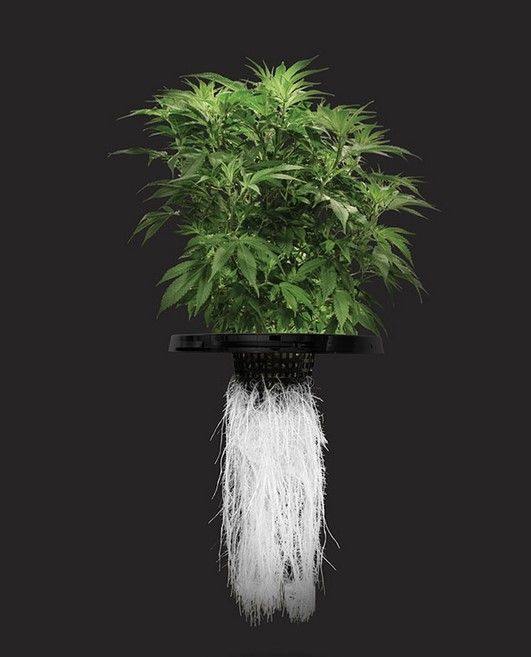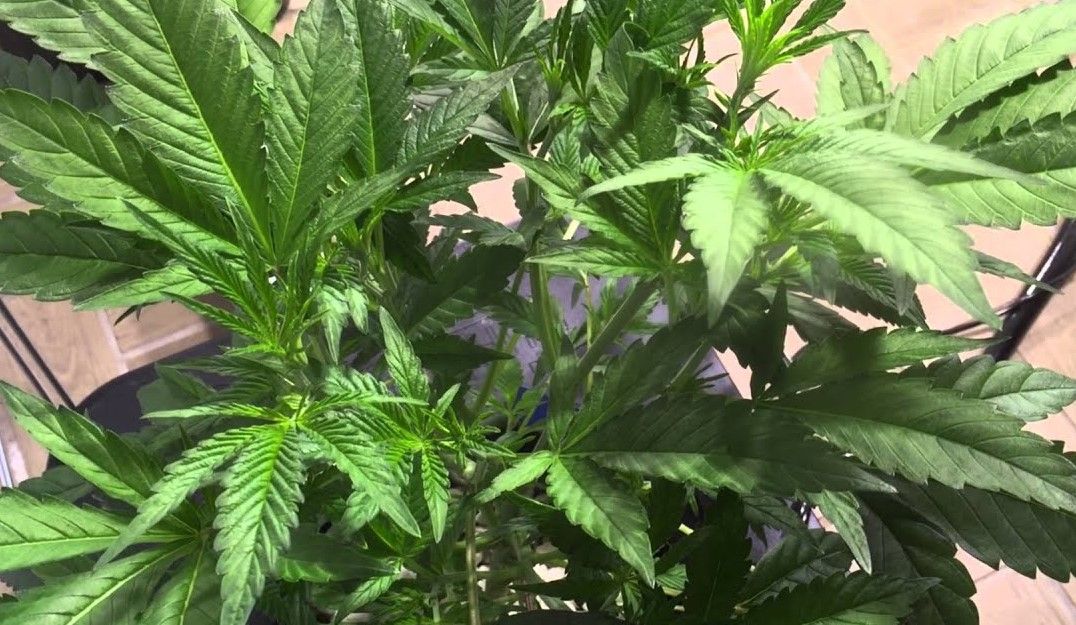Yes, of course, but there’s a lot more to it than that! When growing cannabis, it is tempting to overlook the significance of oxygen. After all, dry air contains approximately 20.95% oxygen, so your plants will be fine, right? Even at 100 percent relative humidity, the air has 20.4% oxygen. If you don’t provide ample ventilation in your grow area, though, your plants may suffer as a result of poor circulation.
Cannabis and Respiration
Respiration is the process of breathing. Like every other living organism, plants respire. While their needs are less complex than humans, they still require a well-ventilated growing area to thrive. Your cannabis plants use their roots, stems, and leaves, in the process of aerobic respiration. They use oxygen as an oxidizer. Dark respiration does not depend on light, whereas photorespiration does.
The process of photosynthesis works around the clock, but is more intense at night. Here’s a quick recap:
- The plant draws water through its roots.
- The leaves on the trees absorb carbon dioxide (CO2) and store energy from sunlight.
- The plant then produces oxygen and sugar using the sun’s energy to convert water and carbon dioxide.
- The plant releases the oxygen into the air and uses the sugars to grow.
If photosynthesis stopped, the oxygen in our atmosphere would be used up within a few thousand years. As you can see from the information above, photosynthesis is a complex process that requires many different steps. This is why plants have a higher respiration capacity at night – they need to rest and recuperate so they can performphotosynthesis during the day. It’s also why every marijuana growing guide tells you to keep the nighttime temperature lower than during daylight hours.
Another vital element that cannabis plants need is air due to the increased levels of CO2. Presently, the level of carbon dioxide in our atmosphere rests at approximately 407 parts per million (ppm). To put this into perspective, it is currently the highest level it has been in 800,000 years! Even though elevated CO2 isn’t ideal for humans, plants grow exceptionally well in these conditions. The perfect scenario for your indoor grow room would be to maintain a carbon dioxide level between 1,000 and 1,400 ppm.

Other Important Components of Respiration
In addition, you must keep the roots and substrate well oxygenated. This is especially important for growers who use organic soil because the microorganisms in the earth require oxygen as well. To improve respiration capacity of your soil, consider its porosity when selecting a substrate. Some good options that promote high levels of porosity are perlite or coco coir mixtures.
The tiny pores on the surface of your marijuana plants are known as stomas. Consider these as the plant’s “noses,” through which it draws CO2 and exudes oxygen. If you find that the majority of the stomas are on the underside of the leaves, spray both sides with water twice a day. The optimum temperature for water is between 65 and 70 degrees Fahrenheit. Because rainfall does all of the cleaning for you in outdoor gardens, this isn’t an issue.
Your crop goes through photosynthesis during the day, when it takes in CO2 and releases O2. At night, the process is reversed: it absorbs O2 and releases CO2. If you grow your herb outdoors, there’s no need to worry about air circulation–it happens naturally. However, indoor growers will want to invest in well-placed fans or a ventilation system to keep things moving. An intake fan is necessary for bringing fresh air inside, and an exhaust fan helps remove stale air from the space
Why Air Circulation Is Crucial
The effectiveness of an indoor crop is largely determined by the amount of air exchange it receives. The following are the three things to be concerned about:
- Clean stomas
- Good air circulation
- Consistent air exchange
You should also keep in mind that even distribution throughout the entire space is required. Otherwise, you will get regions with stagnant air as a result of insufficient ventilation. It’s a balancing act because you must ensure that the air isn’t too wet or dry. Air layers are to be avoided since hot air accumulates in higher locations, while cooler air usually flows downwards. The crop’s growth rate is slower and it is more prone to insect attack and mold development as a consequence of this phenomenon.
Useful Air Circulation & Exchange Equipment
- The following list is not complete, and you don’t need to purchase everything on it. Your needs depend upon the size of your grow room. If, for instance, you have a small grow tent, there is no reason to buy six items from this list!
- Intake Fan: Brings oxygen-rich air to the growing space.
- Exhaust Fan: Removes air that is low in oxygen.
- Active Carbon Filter: Discreet and effective, this is a must-have if you want to grow stinky weed without attracting attention!
- Ventilation Ducts: You can purchase ducts to remove stale air and freshen up the space with fresh air.
- Acoustic Box: Reduces the noise caused by the fans.
- Ceiling Fan: This fan is designed to be suspended from the ceiling of your grow room, between the lamp and the tops of your plants. Ceiling fans help cool down the layer of hot air that accumulates in that region, preventing it from damaging your plants.
- Clip Fan: A smaller fan that is ideal for small tents.
- Oscillating Stand Fan: Allows for even air distribution.
- Floor Fan: This device allows for better circulation of the floor space. Only people with a large growing area require this gadget in general.
- Dehumidifier: Helps reduce the humidity in a room.
- Humidifier: Increases the level of humidity in a room.
- Thermohydrometer: Measures a room’s temperature and humidity.
Boost Yield with Dissolved Oxygen
Dissolved oxygen (DO) refers to the amount of oxygen saturation in water. The higher the level of O2, the better it is for marijuana plants’ roots. Transpiration–the process of a plant releasing water vapor, oxygen, and nutrients through stomata–lets plants cool down, alters osmotic pressure in cells, and provides a steady flow of water and nutrients from the root system.
By placing your weed’s roots in an environment with higher levels of oxygen, they are able to absorb nutrients more effectively. This is due to the extra metabolic energy that comes from the oxygen, which then helps power nutrient uptake. As a result, you will benefit from having larger root mass and healthier root tips.
If your soil lacks oxygen, it will slow down the movement of water and nutrients. As a result, plant growth is limited, and there are occasions of mild wilting as a consequence of heat stress. When you add in a decreased level of photosynthesis and diminished glucose transmission capabilities, the crop has a lot of issues!
We haven’t even mentioned the vastly increased production of ethylene. Cell collapse and an enhanced risk of disease might be caused by this flammable hydrocarbon gas. There’s also a calcium shortage to deal with. In a nutshell, less oxygen equals lower transpiration, which equals poor news!

How Much Do You Need?
The primary method to evaluate dissolved oxygen is to invest in a specialized DO meter. Most growers are aware of the importance of pH and EC, and they have no problem purchasing a gadget to measure them. A pH or EC meter, on the other hand, may cost as little as $30. In contrast, a DO meter might cost anything from $300 to $300! It’s also considerably more complicated to utilize and frequently necessitates watching instructional films in order to comprehend what’s going on.
Most professionals in the field agree that you only taste a difference in water when the DO level is 12+ ppm. However, boiler operators typically aim for 0.01 or lower to maintain efficiency. Water with a dissolved oxygen rate of 5-9 tap water (at room temperature) and 2.0 low-pressure boilers is still considered rather safe according to research done by University of Wisconsin and University of Minnesota. In fact, they suggest that plants function best when 10 – 12 ppm levels are present in water
Charlie Hayes owns Advanced Treatment Technologies, a company that provides water treatment solutions. He has a biochemistry degree and during his research found that marijuana’s health and production benefits reach a plateau at DO rate of 40-45 ppm in the root zone. However, you need to start with a much higher concentration in order to deliver the right amount to roots via a treatment system.
Increasing the Water’s Dissolved Oxygen Level
DO levels in the water can be increased in a variety of ways. The most popular technique for aerating water is with a bubbler. Injecting air into the water is the method employed. You must, however, be mindful of Henry’s Law. It claims that gas solubility is determined by concentration, temperature, and pressure. CO2, for example, is 20 times more soluble than oxygen.
According to Hayes, the most efficient technique of introducing DO into water is through the use of ozone, which is 12.5 times more soluble than oxygen. You’ll need a treatment system that can handle a high amount of ozone before employing an ozonator. The system must also be able to properly combine and retain the molecule in solution. When converted to DO, ozone is volatile with a half-life of 3-5 minutes, according on Hayes.
Another alternative is to place a stirring pump at the bottom of the reservoir connected to tiny tubing in a hydroponics system. It mixes the solution on a regular or continuous basis. The process is similar to how ocean water flows due to current activity. When you combine or move water, you maintain dissolved oxygen from decaying. You also notice an increase in DO because the surface of the reservoir comes into contact with air.
While some growers opt to use hydrogen peroxide, it can actually be harmful to your plants due to the toxicity levels.
Don’t Forget the Water’s Temperature!
If you want your marijuana plants to remain healthy, it’s important to pay attention to the temperature of their roots. Roots are less active at temperatures below 60 degrees, but they thrive in a range of 62-66 degrees. If the root zone gets too hot (above 75 degrees), there is a risk of root rot.
68 degree water with full oxygenation can hold a DO level of up to 9 ppm, while the same temperature drop to 86 degrees decreases that number significantly to 7.5 ppm. Therefore, when watering your plants, it is best practice to use room-temperature water.
Final Thoughts
Ultimately, your crop should grow just fine without the need for increased dissolved oxygen levels in the water. However, advanced growers know that increasing the DO in the water they provide to their plants is a difference-maker.
Although it might not be logical to spend a lot of money on equipment that increases the amount of dissolved oxygen or a meter to measure the level, it is worth it if you plan to grow your business. When your roots receive water with a high concentration of DO, your plants will feel invigorated. This results in faster-growing and healthier weed, as well as increased yield.
